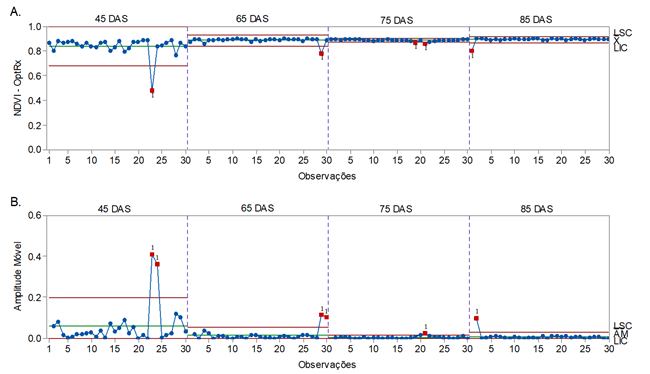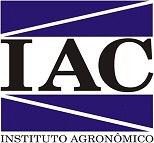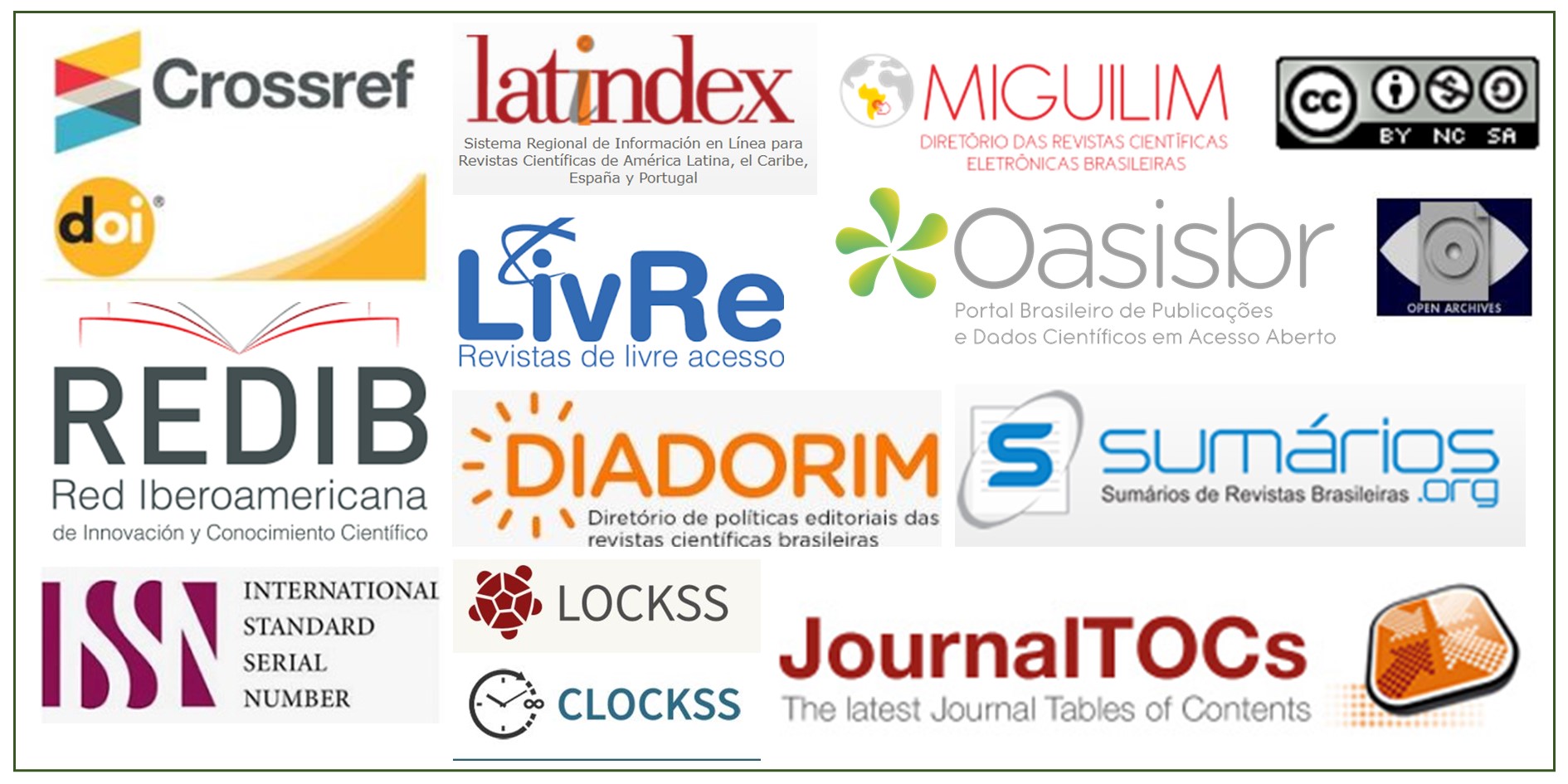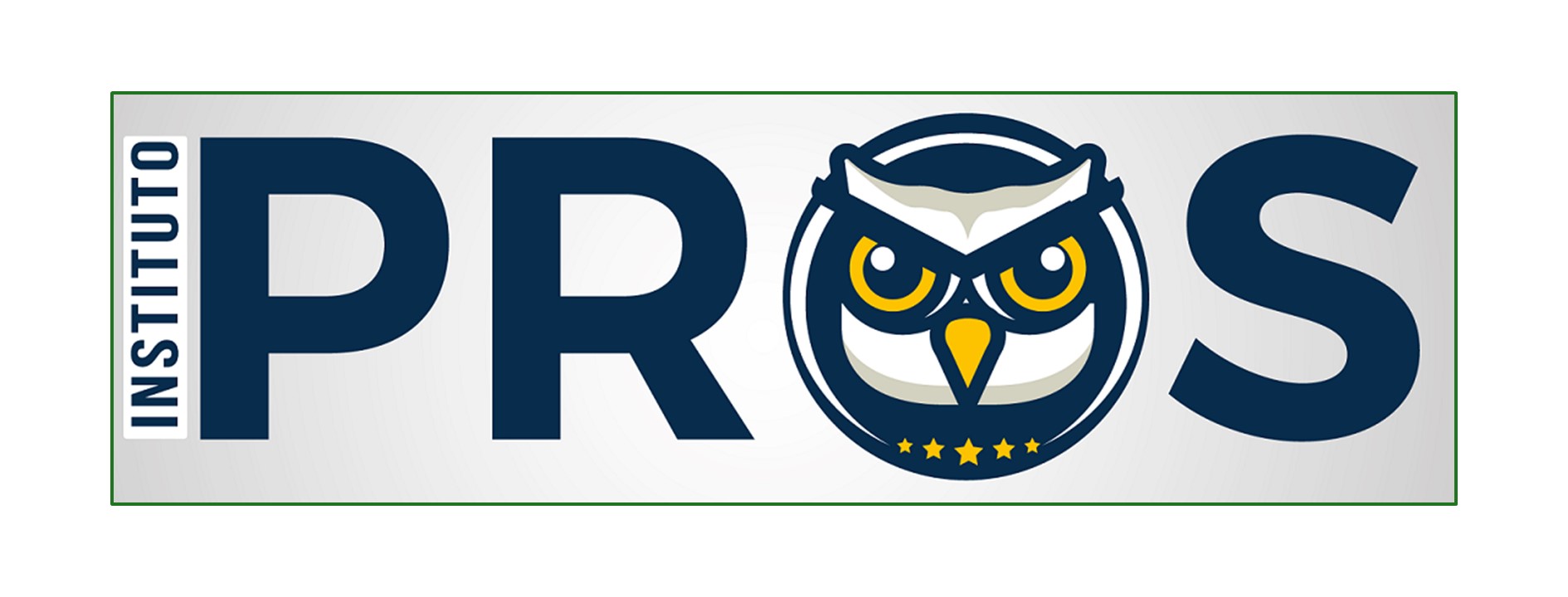Quality of NDVI acquisition in peanut culture using terrestrial sensors
DOI:
https://doi.org/10.17648/sas.v1i1.83Keywords:
Remote sensing, precision agriculture, GreenSeeker, OptRxAbstract
1
ÂRemote Sensing has many applications that can be addressed, among them, the evaluation of the phenological stage, estimate of the productivity and biomass of the culture, and the monitoring of the vigor of the plants and of water stress. The objective of this work was to evaluate the behavior of NDVI and the quality of proximal sensors in obtaining information for peanut culture. The experiment was carried out in a commercial farm located in the city of Ribeirão Preto - SP. The experimental design was based on the premises of the Statistical Process Control (CEP) comprising 30 sample points with 30 x 30 m mesh. During the development of the crop, evaluations were carried out at 45, 65, 75 and 85 days after sowing (DAS). NDVI was acquired with the aid of the GreenSeeker and OptRX canopy sensors. The analysis of the variability of reflectance and vegetation indices (IVs) of the peanut culture was carried out by means of individual value control charts. At 75 and 85 DAS, they are grouped above or below the average in the chart of individual values "‹"‹for the two types of sensors, that is, there was low variability in the experimental area. At 45 DAS, a greater range of variation was observed for the GreenSeeker and OptRx sensors. This temporal variability may be related to the peanut development stage. For the temporal monitoring of the peanut culture through the control charts, the two sensors showed potential and quality of reading over time.
Downloads

Downloads
Published
How to Cite
Issue
Section
License
Autores concordam com os seguintes termos:
a) Os autores mantêm os direitos autorais e concedem à revista o direito de primeira publicação, com o trabalho simultaneamente licenciado sob a LicençaAttribution-NonCommercial-ShareAlike 4.0 International, que permite o compartilhamento do trabalho com reconhecimento da autoria e publicação inicial na Revista SAS. A licença permite o uso, a distribuição e a reprodução irrestrita, em qualquer meio, desde que devidamente citada a fonte. Essa licença permite também que outros remixem, adaptem e criem a partir do seu trabalho para fins não comerciais, desde que atribuam a você o devido crédito e que licenciem as novas criações sob termos idênticos.
b) Não cabe aos autores compensação financeira a qualquer título, por artigos ou resenhas publicados na South American Sciences.
c) Os conceitos expressos nos artigos publicados na South American Sciences são de inteira responsabilidade de seus autores.








